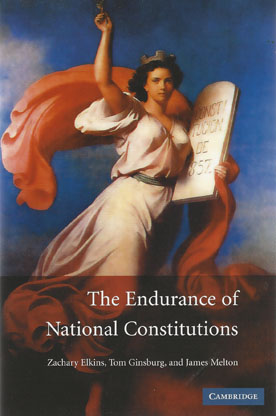
Constitutions are supposed to provide an enduring structure for politics. Yet only half live more than nine years. Why is it that some constitutions endure while others do not?
In The Endurance of National Constitutions Zachary Elkins, Tom Ginsburg, and James Melton examine the causes of constitutional endurance from an institutional perspective. Supported by an original set of cross-national historical data, theirs is the first comprehensive study of constitutional mortality.
They show that whereas constitutions are imperiled by social and political crises, certain aspects of a constitution’s design can lower the risk of death substantially. Thus, to the extent that endurance is desirable – a question that the authors also subject to scrutiny – the decisions of founders take on added importance.